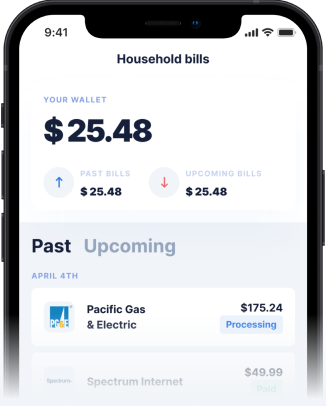No More Overdraft Fees
Have you ever gone to make a purchase only to have your debit card declined? Or maybe you went to the ATM to get some cash but you overestimated how much was in your account and got hit with a massive overdraft fee? These types of situations are never ideal, and having a check bounce or a debit transaction refused can be extremely disruptive and frustrating. Fortunately, overdraft protection guarantees that your transactions will clear if the account balance falls below zero. Here’s how it works.
Even if you’re careful with your money, you can still overdraw your account. This happens most often with debit card purchases, ATM withdrawals, or automatic monthly payments that come out when the account balance is too low.
Most banks that offer overdraft protection allow you to link an account with a savings account or another line of credit that can provide an automatic pre-approved loan. That way, whenever you accidentally spend more than what’s in your account, you are covered by funds from these other sources.
This type of protection is great to have, but depending on the type of account you equip with overdraft protection, there are generally fees involved. For example, when the overdraft protection kicks in, you’ll incur a transfer fee from the linked account to move the necessary funds over to your checking account. In addition to that, your bank may also charge you a monthly fee to maintain continuous coverage.
Determining whether overdraft protection is right for you is a personal decision, but having all the information can help you make an educated choice that improves your financial situation. Let’s take a closer look at overdraft protection, the pros and cons, and how to decide what’s right for you.
What Is Overdraft Protection?
You overdraw your bank account any time you take part in a transaction that causes your bank account to fall below zero. Overdraft protection is a service many banks and credit unions provide to their customers. Essentially, in the event that you overdraw your account, your bank will cover the difference for you, and you won’t be charged a non-sufficient funds (NSF) fee.
It’s important to note that banks are not federally required to offer an overdraft protection service, although most do. However, even if you opt in to overdraft protection, your bank may not cover certain overdraft transactions if they fall outside the rules in the legal agreement.
Not everyone needs overdraft protection, but if you frequently spend more than what’s in your account, overdraft protection might be a useful service for you.
Why Is It Important?
Without overdraft protection, if you overdraw your account, your checks will bounce, your debit card transactions will be declined, and you’ll be charged a fee for having insufficient funds to cover the transaction. In some instances, your bank might also charge the merchant a fee for the declined transaction. In extreme cases, your bank may close your account, which will also affect your ability to open a new account.
For many people, none of these consequences are worth the risk of potentially overdrawing an account. Plus, having a debit card transaction declined can be very embarrassing. So it’s often worth the cost to pay for overdraft protection and avoid ever having to worry about it.
What Are the Benefits?
Although overdraft protection does come with an added expense that you’ll want to consider, there are plenty of benefits to having it. And many of these benefits will save you money and reduce your financial stress in the long run.
Your Transaction Will Go Through
The amount of money in your account fluctuates throughout the month, so if you pay someone with a check but they don’t cash it until much later, you might be stuck with a bounced check. Or if you miscalculate and you accidentally overspend at a restaurant or a store, the cringeworthy moment of having your card declined can be a thing of the past.
Fortunately, with overdraft protection, you never have to worry about that happening. You won’t bounce a check, and your transactions will always go through. Even if you’re experiencing a financial crisis, overdraft protection ensures that you’ll still have access to funds when you need them most.
You Don’t Have to Worry About Late Fees From Creditors
Overdraft fees and late fees can really add up, contributing to any financial stress you’re already experiencing. And if you’re unable to pay those fees, you could suffer more severe consequences like closed accounts and a damaged credit score. Even though unpaid overdraft and late fees won’t directly hurt your credit, if you don’t pay them, your bank may send the debt to a collections agency, which will have a negative impact on your credit score.
Although you still have to pay for overdraft protection, it is cheaper than paying overdraft or NSF fees. Sometimes, banks will even provide free overdraft protection to preferred customers. So definitely ask your bank if you qualify for free overdraft protection when you open a new account. You might be able to get it for free.
Save Yourself From Embarrassment at Checkout
If you’ve ever tried to check out at a restaurant or a store and had your debit card declined, you understand how embarrassing it can be. No one wants to be caught in that position, especially if you’re out with family or friends when it happens. With overdraft protection, you never have to worry about the embarrassment of a declined transaction. Instead, you’ll always have enough funds to cover your purchases, even if you accidentally miscalculate or go a little over budget. No one’s perfect, but overdraft protection can save you a lot of worry and frustration when you make a mistake.
Are There Any Cons?
Of course, like most things in life, overdraft protection isn’t a perfect solution. There is one main drawback that you should be aware of.
Fees Can Add Up Quickly
Many banks charge you a fee per overdraft protection transfer. Often, the fee is $35 dollars or more, meaning a $5 coffee could turn into a $40 coffee if you’re not careful. And if you make multiple purchases but you don’t have sufficient funds to cover any of them, you’ll be charged a fee for each individual transaction. If your account has a negative balance for an extended time, your bank might even charge you an additional fee for that too.
Not surprisingly, those fees can rack up quickly. Unfortunately, you’re also required to pay whatever fee your bank has determined it will charge for overdrafts. So, if you’re unaware of the fees you incur when you overdraw your account, you’re likely in for an unpleasant surprise the next time you check your bank statement.
However, you can avoid overdraft fees by keeping a little extra cash in your account. Whether you aim to keep $200 extra in your account or $1,000, the additional funds create a buffer that protects you from incurring any overdraft coverage fees if you spend more than you intended to. As another safeguard against getting charged overdraft fees, you can also set up low-balance alerts for your accounts. These alerts will notify you when your account balance has dropped below a certain point that you specify. That way, you always know exactly how much money you have to spend and when you should hold off and wait until your next payday.
How to Decide What’s Right for You
Trying to decide whether you want overdraft protection is sometimes a tough decision. Overdraft protection is an excellent way to avoid paying expensive overdraft fees, but the decision of whether to enroll in it is entirely up to you. If you constantly worry about your card getting declined or you frequently have a very low balance in your account, it might be a good idea to sign up for overdraft protection. Just make sure you carefully weigh the pros and cons before you decide to opt in or out of overdraft protection for your accounts.
If you’re on the fence about whether overdraft protection is right for you, you may also want to consider alternative ways to avoid overdraft fees, such as creating a buffer in your checking account so you’re less likely to overspend or setting up bank alerts for low balances. If you find that these solutions don’t work well for you, overdraft protection might be the better option.
Download Gerald Today
If you tend to overdraw your account often, you’re not alone, and we can help. In fact, Gerald was made for customers who frequently find themselves paying expensive overdraft fees.
Our overdraft protection feature saves you from hefty fees by constantly monitoring your bank account balance and upcoming bills. All you have to do is connect your billing accounts and activate Gerald’s autopay feature. Once you do that, we automatically pay your household bills every month so you don’t have to worry about doing it. There’s no more stress — just bills paid on time every time!
If we see that your upcoming bill total is more than what’s in your account, we’ll offer you two options for overdraft protection: an instant $100 cash advance or up to half your paycheck in advance at any time. And the best part? We won’t charge any hidden fees for overdraft protection.
With Gerald, overdraft fees can be a thing of the past. Say goodbye to overdraft and late fees by creating your free Gerald account today!


